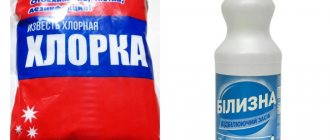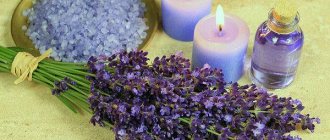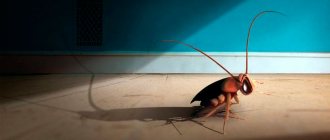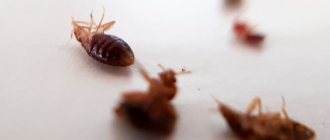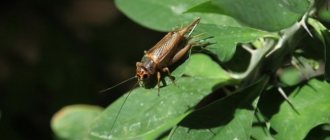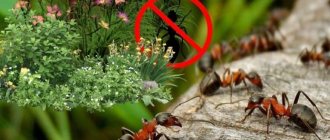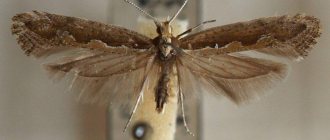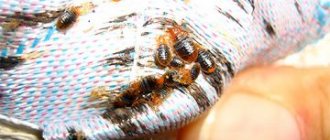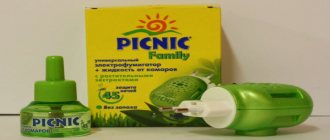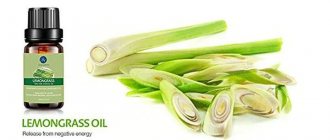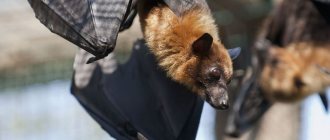16.03.2017
The appearance of wasps or hornets on a summer cottage is not only an unpleasant and annoying fact, but also dangerous to the health (and sometimes life) of a person. You never know what careless sudden movement these insects will perceive as a signal of danger and a reason to attack. Therefore, if you know what repels wasps and hornets, you can avoid such a neighborhood fraught with consequences.
- What attracts
- What scares you away
- The most effective means
Why do stinging insects appear?
In the spring, insects awaken from hibernation, swarming begins, and the search for a place to form a nest begins. You need to find a quiet, secluded place where you can safely reproduce.
Wasps often make nests in attics, spreading bushes, trees, stumps, hollows, and under the roof of private houses. Sometimes insects climb onto the balcony, especially if there are old things in this area that no one has touched for a long time, and you can safely build a nest.
In most cases, a dark gray ball with brownish and black splashes with a small entrance is located at the top of the balcony. While there are few wasps, many owners do not pay attention to strange “neighbors,” but after the appearance of the offspring, the situation quickly becomes critical.
If two or three wasps often hover on the balcony, you should think about the reason for their appearance, inspect all corners: perhaps there is a wasp nest on the balcony.
In old brick houses, if there are problems with the tightness of seams in the masonry, insects climb deeper into the voids, and it is very difficult to notice and get pests. Often people become victims of attacks by stinging insects while repairing balconies and walls. It is easy to miss and accidentally disturb a few individuals hiding among the brickwork.
Other reasons for wasp infestation:
in an open or glassed space there are flowerpots with soil in which the housewife has not been able to plant flowers for a long time; The boarded balcony has cracks and dry areas where stinging insects can easily hide. Also, not only wasps, but also fleas, cockroaches, bugs, and ants may appear in the home; the owners store old boxes, household equipment, buckets, rags, cups with soil and seedlings, and other devices for the garden and garden; at the junction of the glazed balcony with the wall there are recesses, cracks, pieces of tiles fall off, and there are depressions in the bricks.
Defense - in attack
“Some breeds of wasps make their nests on tree branches, in stables, barns, attics and other rooms. They do this: they put some kind of scraper on a stick and, with its help, dump the nests into an open bag. When they have collected enough, the bag with nests is dipped into boiling water. This operation must also be carried out late in the evening.”
The century-old idea of first determining where the complaining neighbors are flying out from, and then destroying their houses is quite sound. It is also correct to schedule the operation for the evening: during the day, taking any action against nests of wasps and especially hornets is more expensive for yourself.
Modern method.
After sunset, treat the exit hole of the wasp nest (or “entry” if the house is located in a wall, woodshed or other enclosed space) with any anti-flying insecticide, possibly in a regular spray can. Spraying for 3-6 seconds is sufficient. Immediately after this, you need to tightly seal the entrance with construction foam you brought with you or pre-kneaded clay. After a day, you need to check whether the striped neighbors are using some other exit.
An article from the journal “Progressive Gardening and Horticulture” of 1910 was prepared by Vladimir Veselov, a historian.
Repellents
House bugs are afraid of certain aromas; they detect them using neurons located on the hairs. Repellent plants include the following herbs:
- Sagebrush. This plant is the most effective and efficient. Wormwood is a popular way to help repel bedbugs; the herb is inexpensive and is quite easy to use. You can pick the plant yourself or buy it at the pharmacy. If the scaring period occurs in the summer, it is better to pick fresh wormwood. Bed bugs do not like the smell of this plant, so it is necessary to spread the grass in different places: under baseboards, beds, mattresses, rugs, in cabinets, bedside tables. It definitely won’t help get rid of bedbugs, although it will scare them away for a while. But these bloodsuckers will still leave offspring. The plant has no effect on the eggs, and over time it loses its effectiveness. But it is a good preventive measure and will help people living in a house that has these bloodsuckers to alleviate their suffering for a certain period of time. If there are no bed bugs in the apartment, but the neighbors have them, it is recommended to place wormwood at the threshold, in the ventilation grilles. This way, the neighbor’s problem will not be “transferred” to you. Before laying out the grass in the house, you need to do a wet cleaning and wash the bed.
- Tansy. When asked what bed bugs are afraid of, you can find many rave reviews regarding this herb. Some may be lucky enough to get rid of these insects for a while, but not for long. These cute yellow flowers cannot solve the problem globally. Yes, insects are afraid of their smell and will not cause unpleasant moments to the owners of the house for some time. Insects are afraid of this grass, just like wormwood. It is recommended to place it under mattresses, beds, sofas, and baseboards. You can use tansy decoction. To do this, boil it in water and, after cooling, spray it throughout the apartment. The decoction and tansy herb have no effect on eggs, but insects are afraid of it.
- Air. The rather pungent smell of calamus can repel house bugs. You can buy it at the pharmacy, it is sold in powder form. You should scatter the powder under mattresses, beds, baseboards, and in the corners of rooms. Calamus is completely safe for people and animals. It is added to infusions and decoctions.
- Chamomile. Previously, the drug pyrethrum was made on its basis. Nowadays it is practically not on sale, so an alternative is pharmaceutical medicinal chamomile. Bed bugs are very afraid of its smell. This plant is completely safe and has a calming effect on people. It is recommended to use chamomile essential oil. You should leave a few drops on the night light.
- Bay leaf. A plant that is completely safe for the health of households and is often used in cooking. But bed bugs cannot stand the smell. Leaves can be laid out in unlimited quantities. Also, infusions are prepared based on them, added to water and washed floors.
Herbs can provide effective help if there are a small number of insects in the house. Despite the fact that the herbs can smell strongly, insects are able to overcome their fear, as it is overcome by hunger. You can also try purchasing a bedbug repeller. The manufacturer gives 100% effectiveness. It is safe for people and pets. Judging by the reviews available on the Internet, the product has proven itself to be excellent.
Behavioral therapy
The simplest and most accessible method of psychotherapeutic treatment is widely used for many psychological disorders and phobias. After several sessions, an experienced specialist will help a person formulate the essence of the problem, identify the main etiological factors and determine standard models of behavior for a particular patient in a situation with bees.
Then the psychotherapist will try to build the most optimal line of defense, to create more perfect patterns. These are completely new behavioral models that will make it much easier to react to encounters with insects. By putting them into practice, patients will be able to maintain their sanity and behave correctly next time.
For optimal results, approximately 10 sessions of behavioral therapy are required. It must be combined with the desire of the person himself to work on himself, cope with the situation and emotions. The psychotherapist will be able to formulate behavioral models, but implementing them is the task of the patient himself.
This is the simplest and most accessible method that shows optimal effectiveness. In this case, the patient receives the support of a psychotherapist and the opportunity to fight his problem together with a specialist.
Should I touch a wasp's nest on the balcony?
Why do doctors strongly advise removing a wasp's nest from the balcony? Perhaps humans can coexist peacefully with insects of this species?
The danger is that wasps perceive any intrusion into their territory as obvious aggression. The housewife goes out to hang up the laundry, moves her hands, takes out clothespins, shakes off the pillowcases - stinging insects perceive all actions as a threat. The answer is immediate: a sting, an attack on a person to protect its nest and young individuals. Representatives of the stinging species do not understand who came out onto the balcony: a child or an adult, which makes an encounter with wasps even more dangerous.
Other important negative factors:
wasps do not leave a sting and can attack several times, which increases the danger from bites; Also, stinging insects often carry certain diseases.
Traps
Another good way to combat wasps is to use traps; their fundamental difference from the previous method is that the bait does not have to be poisoned.
You can purchase such a device in a store or construct it yourself if you follow the instructions below:
- To make it you will need a large plastic bottle, the recommended volume is 1.5-2 liters.
- It is necessary to twist the roof of the container and cut off its upper part by a third with a knife.
- Bait is poured inside, this again can be beer with sugar or fermented jam.
- The cut off upper third of the bottle is inserted into the lower part; this must be done with the neck down.
- The container with the bait is suspended from a tree; in the future, it only needs to be updated once every few days, since wasps caught inside, due to a number of their instincts, will not be able to find their way out into the wild.
Safety precautions when removing a nest
Important rules for hosts:
protect your hands with thick gloves; wear clear glasses; Before the procedure, refrain from using deodorants and perfumes, do not wash your hair with shampoo with a pleasant smell, and do not smoke; wear long sleeves to protect your legs and neck; do not make sudden movements, act carefully; First, treat the nest so that the wasps die, only after this operation remove the dense ball from the balcony or wall; do not open the wasp’s nest ahead of time: there may be living individuals there; During the procedure, remove household members from the home and warn neighbors not to go out onto the balcony. It is important to close the vents and windows to protect against insects.
Natural flavors
Most natural odors only have a deterrent effect. The use of fragrant plants and products does not destroy pests, but many aromas can become an obstacle to the path of fleas into the apartment. Brooms made from fragrant herbs, fumigators with essential oils, concentrated infusions and decoctions of strongly odorous plants are a pleasant and harmless way to combat parasites.
Tar
Tar soap has gained considerable popularity. This is an effective flea remedy. It is dissolved in water and used to wash animals and floors. Tar destroys adult fleas and their larvae.
Essential oil
Essential oils from the following plants have a strong repellent effect:
- Carnation.
- Mint.
- Aloe.
- Thyme.
- Walnut.
- Eucalyptus.
- Geranium.
- Camphor.
- Lavender.
- Anise.
It is enough to dilute a few drops with water and wipe all surfaces in the room, including hard-to-reach places. For preventive purposes, treatment should be repeated. The concentrate has an enhanced and effective effect. Pleases with a pleasant aroma.
Spiders
These insects do not wait for spring and exist quietly in our houses and apartments all year round. Use a few methods and you won't have to remove cobwebs from corners as often.
Mint
Mix a few drops of peppermint essential oil, a little detergent and plain water. Pour the mixture into a spray bottle and spray all corners where cobwebs often appear.
Coconut oil and vinegar
A mixture of coconut oil and white vinegar is also great for keeping spiders away, but before you spray your home with this mixture, test it on a small area of carpet, curtains and wallpaper - the oil may leave a residue.
Citrus essential oils
Spiders dislike citrus oils—lemon, orange, and lime—as much as they dislike mint. Of course, this won't kill them, but it will make them avoid places that smell of citrus. Just buy natural essential oils (you can find them at the pharmacy), and not fragrant fakes.
What and how to scare away wasps in nature
What are wasps afraid of – sharp, persistent odors. Some plants, smoke, vinegar, ammonia and much more repel insects. To get rid of wasps in nature, use special repellents; folk remedies will help scare away wasps from the house.
Smoke
By observing changes in the behavior of flying insects after lighting a fire, you can find the answer to the question of whether wasps are afraid of smoke. When he appears, they disappear because they cannot stand his pungent smell.
How is this used in practice? An outdated method is the fumigation of premises by lighting a portable stove. But today it is not used due to the risk of fire and the need to ventilate the building for a long time. In addition, the smell eats into wood, furniture and fabrics, so fumigation can only be used in brick non-residential buildings.
But at a picnic or similar, lighting a fire will scare away the wasps, and you can rest in peace. The effect will be enhanced by adding spruce or pine needles and wood to the firewood: when burned, they release strong-smelling substances, the aroma of which wasps cannot tolerate.
Water
Many people are interested in whether wasps are afraid of water, because the liquid is always at hand. All flying insects do not like drops of moisture falling on their wings, because they interfere with their flight. For this reason, in rainy weather it is almost impossible to see wasps: they hide in their hive or in other secluded corners. Therefore, if they appear near a person while swimming, you can try splashing water on them. Spraying from a spray bottle, if one is at hand, will also have a short-term effect on the enemy.
But water in the fight against wasps is mainly used to destroy hives located close to the ground. You can take a bucket or other similar container, the diameter of which exceeds the size of the nest, and place it on it from below for 5–10 minutes. The hole in the wasp house is located at the bottom, so the inhabitants will not have time to get out if they act quickly. When water fills the hive from the inside, its inhabitants will begin to die. After this, you can separate the nest from the surface to which it is attached and destroy it. The attachment point is treated with an insecticidal solution or potassium permanganate.
Before approaching a wasp nest, you need to protect yourself: wear thick clothing so that there is no exposed skin, including gloves and a mosquito mask.
Another way to use water against wasps is to knock the nest into a bucket of boiling water. This way the death of insects occurs much faster.
Plants
There are also flowers and herbs that repel wasps. These plants include those that are well known to everyone:
- mint and lemon balm;
- basil;
- wormwood;
- various types of geraniums.
Their smell from wasps produces an effect because they contain strong-smelling substances, primarily essential oils. For a person, they are either pleasant or neutral. But the insect will most likely prefer to fly around the garden with such plantings.
Plants against wasps will also bring other benefits: mint and lemon balm make wonderful teas with a calming effect, geraniums are a popular decoration for flower beds and balconies, and basil is added as a spice to various dishes.
One of the little-known plants that repel wasps is common harmala. Its insecticidal properties are especially noticeable if you set fire to a bunch of grass. If you throw it into the fire, insects will no longer be afraid. True, this plant can be found mainly in the hot steppes in eastern Europe and Central Asia.
Chemical substances
What other smell repels wasps? These dangerous insects do not like liquid flammable materials: gasoline, kerosene, diesel fuel and solvent. Even humans do not like the pronounced “aroma” of these chemicals; moreover, they can cause toxic poisoning of the body. Therefore, they can only be used as a deterrent for spraying nests on the street or in non-residential premises (garages).
There is a high probability that the swarm will not want to be near the smell and will go in search of a better place. Most individuals may even die when toxic fumes enter the body through the respiratory system.
To drive wasps out of a nest using gasoline, kerosene or solvent, you need to adhere to the following action plan:
- Take a suitable container with a spray bottle and fill it with flammable liquid.
- Spray the hive from below so that more of the substance falls on the lower part around the hole: this will make it easier for unpleasant-smelling vapors to penetrate inside the nest.
- Move to a safe distance and wait until the wasps begin to leave their home.
- If the insects do not fly out, it means that too little liquid was used. The procedure can be repeated.
- When the nest becomes free, it is removed and burned. It is important not to forget about fire safety. Due to the risk of fire, flammable materials are strongly not recommended for treating nests located in wooden buildings.
When burning a nest, you should also be careful: due to impregnation, it will quickly flare up, so destruction is carried out in an open space. It is better to have a supply of water or sand on hand to put out a fire in an emergency.
Ultrasound
Immediately after receiving a positive answer to the question of whether wasps are afraid of ultrasound, various companies began producing ultrasonic repellers. They can be used both in the house and in the garden. Ultrasonic waves are safe for humans, while wasps will not risk approaching their source.
But there is also a downside: ultrasound will also drive away beneficial insects. Some scientists believe that small animals, including cats and dogs, also experience discomfort from it.
Insecticides
Unlike other insects, an attack by a wasp or hornet can cause the death of a person from Quincke's edema or anaphylactic shock. Therefore, in specialized stores, means for their destruction are presented in a wide range. Domestic and foreign manufacturers produce them in the form of aerosols, sprays, ready-made solutions, and powders for preparing dilutions. The most popular are Mosquitall, Delta Zone, Executioner, and Tetrix.
How to choose the best insecticide:
For the destruction of single wasps, sweet baits generously moistened with poisonous agents are ideal. The method is effective, but during the “hunt” it is better to remove small children, pets and birds from the room. The Msquitall aerosol against dangerous wasp nests has proven itself to be safe for human health.
It is not advisable to treat a summer cottage during the flowering period. Not only wasps will die, but also beneficial insects (bees, butterflies, dragonflies) that feed on sweet flower pollen and nectar. The best ways to kill bees yourself
"Karbofos"
“Karbofos” not only destroys bees and wasps, but also repels them from the summer cottage and the premises they have chosen with its smell. It is highly undesirable to use it in residential premises due to its high toxicity. The composition of karbofos includes malathion, fillers and fragrances. It is produced in the form of powder in bags, a concentrated suspension in ampoules and a ready-made solution in five-liter containers.
After entering the insect's body, malathion blocks the digestive system. The wasp loses the ability to fully feed and soon dies. But before that, she manages to transmit the poison to other inhabitants of the nest.
Attention! The disadvantages of Karbofos include the gradual resistance (stability) of insects to the action of the poison. Soon, their bodies begin to produce enzymes that make the wasps immune to the insecticide.
"Delta Zone"
"Delta Zone" is intended for double treatment of utility rooms and garden plots against wasps at monthly intervals. The insecticidal effect is based on the poisonous properties of deltamethrin, a chemical substance that is highly safe. You can return to the room treated with this thick and viscous solution after 20–30 minutes.
"Executioner"
The insecticide quickly disappears, leaving no stains or suffocating odor behind. It is effective against almost all harmful insects, including blood-sucking ones. "Executioner" is produced in the form of a concentrated solution, the active ingredient of which is fenthion. After mixing, the dilution is placed in a spray bottle and the areas in the country where wasps are expected to swarm are carefully treated.
"Tetrix"
The active ingredient of the insecticide is metaphos, intended primarily for the destruction of crawling insects. In the fight against wasps, Tetrix is used exclusively for treating a previously discovered nest. Spraying the solution on it leads to massive death of wasps. The insecticide is sold in the form of a concentrate in glass or plastic containers.
"Dichlorvos"
This is a chemical from the group of organophosphorus compounds with a wide spectrum of action. The insecticide is relatively safe for humans, therefore it is actively used to kill wasps even in residential areas. “Dichlorvos” by dehydrochlorinating chlorophos, a substance that instantly paralyzes the insect. The drug has only one drawback - its sharp, repulsive smell lingers in the air for a long time.
"Dichlorvos" must be stored out of the reach of children. Its bottle is similar to a regular air freshener, so if sprayed in a cramped room, there is a high probability of intoxication of the child.
Preparations based on chlorpyrifos
Many manufacturers produce insecticides with chlorpyrifos, since this chemical compound in minimal doses destroys huge nests and colonies of insects, including wasps. It is more stable compared to other organophosphorus compounds and exhibits a pronounced intestinal effect.
How to repel wasps on the site
If there is a wasp family or a nest in the garden, vegetable garden, garage, or dacha, you can get rid of it with smoke. The method will be much more effective if you set fire to certain “ingredients”.
- If you burn rubber, the unpleasant odor will be released for a very long time. In just one evening you can expel a wasp family from the nest forever. To consolidate the result, repeat the procedure the next day.
- In the yard, in the garden, in the vegetable garden, a fire is made from pine wood. Wasps cannot stand the smell of pine. For humans, this aroma is neutral; you can safely continue working on the site while the fire smokes the pests out of the nest.
- To scare away wasps from the table in the gazebo, on the terrace, on a picnic, they set fire to a spruce, pine, or wormwood twig.
A special spiral that, when burned, releases an insecticidal substance, repels wasps. The product is produced by different brands - Raptor, Clean House, Off, Moskitol. It burns completely in 2 hours, provides protection in the surrounding area for 5 m, and smokes insects out of the nest.
Wasp colonies often appear near the pool. To get rid of them, use insecticides, pour boiling water over the nest, and use repellents. Dichlorvos, Super Fas, smoke bombs, and essential oils help against wasps near the pool.
Repellers
What else can you do to repel wasps? Reference products will help you get rid of uninvited guests at your dacha. Buy in store:
These repellers are designed to get rid of wasp colonies located in hard-to-reach places. They imitate another nest, and it is taboo for wasps to violate someone else’s territory.
What smell repels wasps and bees?
A number of pungent or strong odors are thought to repel insects. Among them are the smells of wormwood and mint. Gardeners believe that these plants are also not tolerated by mosquitoes and ticks. But, unfortunately, this is not always the case. If you line the perimeter of your country house with wormwood, there may be fewer insects, but this is unlikely to stop hungry mosquitoes or dangerous wasps from nesting in your hallway.
Wasps are also repelled by strong chemical odors: kerosene, gasoline, alcohol. But the constant presence of vapors of these substances near a person is not very pleasant and even dangerous: it can cause dizziness and intoxication.
It is also futile to use fumigators against wasps and bees - they are ineffective, especially against wasps. If the wasp has already built a nest and laid larvae there, there is little that can stop it on its way home.
What smells wasps can’t stand and how to scare them?
Insects are repelled by the smell and composition of professional insecticide preparations. Such substances are not only unpleasant, but also dangerous for wasps and bees, so they do not risk appearing where preventive disinsection has been carried out. Like any other animals, wasps and bees have strong self-preservation instincts. That is why, if you have a garden, vegetable garden, or flowering fields nearby, it is important to carry out preventive treatment against wasps and bees in a timely manner. And ordering disinsection against wasps is a must. After all, such prevention can save the lives of your loved ones.
Smells that attract wasps
Sometimes getting rid of wasps requires eliminating the scents that attract them. Traditional insect dishes - ripe fruits: apples, pears, apricots, melon, grapes, watermelon - should not be left openly available in the house.
Also attracts wasps:
- lemonade;
- kvass;
- Braga;
- yeast starter;
- syrup;
- sugar;
- jam;
- juice;
- beer;
- honey;
- spoiled meat, fish.
The smell is stronger from rotting, fermented foods. Therefore, they need to be disposed of in a timely manner so as not to attract pests. Insects provide protein food to the larvae. Therefore, along with sweets, they hunt for meat.
If you cannot scare away pests, prepare a simple trap from a plastic bottle. Cut off the neck, turn it inside like a watering can, and secure it with staples. Any bait is placed inside. Over the course of a day, several dozen individuals gather in one trap. Wasps fly in easily, but only a few get back out. It should also be remembered that it is permissible to destroy insects if they threaten health.
What attracts
It is known that the hornet is also, in fact, a wasp, and they are not only sweet-toothed, but also carnivorous insects. These weaknesses of theirs can be successfully used against themselves, giving them a final feast, while using anti-wasp remedies such as traps and bait. The food preferences of insects are very diverse:
- sweets (jam, honey, fruit, sugar water, etc.);
- fermented (beer, kvass, fermented jam and juices);
- food mixtures (beer + honey, beer + sugar, syrups from several ingredients, etc.);
- meat, fish (especially spoiled ones).
These are some of the favorite delicacies of wasps, smelling which insects will certainly flock to the place of feasting, not knowing that this may be their last meal. Thus, the fight against these insects on the site can take place according to the principle of special luring by using preferences, and all this with the goal of destroying or reducing the number of dangerous “neighbors”.
However, besides food, there are other smells that will definitely attract wasps and hornets: the smell of a sweaty body, sweet or floral perfume. In addition to odors, the aggression of wasps and hornets can increase from any bright (yellow, orange, etc.) and black color. Knowing this, you can reduce the likelihood of attracting insects to yourself.
Folk remedies for wasps in the country
Destruction of wasp nests is a drastic and quite dangerous method. But there are much simpler options.
Sweet water bottles
You need to cut off the top and neck of a plastic bottle, pour old jam or syrup diluted in water 3 into it, and insert the upper cut part of the bottle on top, but with the neck down. Bottles should be placed or hung in the garden. The wasps make their way inside, but they can no longer fly out and drown. From time to time, dead wasps need to be shaken out and new syrup poured into bottles.
Drinkers with poisoned syrup
The method is similar, but somewhat improved. You need to cut off the bottom of a plastic bottle, pierce 2 holes in the top edge, tie a wire and hang these containers on fruit trees and grapes. Syrup is poured into the drinking bowls (the same old jam diluted with water), and then any insecticide against pests is added to it (see “Professional Products”). After the insects drink the poisoned “cocktail,” they will fly away and die outside the drinking bowls. This means you won't have to clean them. All you need is to add syrup to the drinking bowls from time to time.
Liquid smoke
If wasps do not bother you, you love nature and are not ready to kill even insects, then this method is for you. Its essence is to protect the crop without harming the wasps. All you need is to spray fruit plants and grapes with liquid smoke (it is sold in grocery stores). Wasps, like other insects, do not like the smell of smoke, so they will fly around fruit plants.
fly agaric
Almost everyone knows about the poisonous properties of this type of mushroom. They don't like fly agarics and wasps. Therefore, summer residents sometimes protect their plots by placing containers with poison around the perimeter. It is prepared like this:
- medium-sized mushrooms (5 pieces), cut into slices;
- pour thick honey (100 g);
- add 1 liter of water and place on low heat.
The mixture is cooked on the stove for about an hour. Then, after cooling, they are crushed and placed in small containers. If the area is small, then it is enough to place jars of poison in its corners.
Attention! The insects will not reach you, distracted by the smell of honey, but, having tasted the “sweets,” they will be poisoned and die.
Machine oil
This method is sometimes used if a wasp nest is found on the site. They use the product not so much to repel insects as to destroy the nest itself. A piece of rag is soaked in oil, then this rag is inserted into the hole in the socket. It will not remain inside any living person for a day.
Hot pepper
The spicy smell is so strong that wasps will fly around it. To keep insects away from your home, hang a bunch of chili pods near an open window. It will be effective both fresh and dried.
Attention! Wasps will fly around the area if you plant hot pepper bushes on it.
Plants
Knowing what wasps are afraid of, it is easier to choose repellents using herbal ingredients. Flowers and herbs that emit ethereal aromas give a good effect:
- Basil;
- mint and lemon balm;
- absinthe;
- lavender;
- all varieties of geraniums.
You can use these herbs to remove wasps from your rooms. In the fresh air, just light a fire and throw a bouquet of aromatic herbs into it.
You can scare away wasps from your summer cottage if you plant spicy and essential oil crops in the garden in advance.
On a note! When going on a picnic, it would be a good idea to lubricate your body with a concentrated decoction of one of these herbs. This will repel not only wasps, but also other insects.
To prevent pests from entering the room from the street, you can lubricate window and door frames with herbal decoctions with a repellent odor.
Using Peppermint Oil
Wasps do not like any minty smell, so the scent of peppermint is effective in repelling them. It is enough to drip a little mint oil onto cotton swabs and place them around the house or in places where wasps like to settle (eaves, cracks, ledges, holes in the ground).
Using an Essential Oil Blend
Wasps also do not like the mixture of clove and geranium essential oils. These scents can be used to repel wasps. A few drops of oils can be diluted with water and placed in a spray bottle, adding a little liquid soap to them. Then spray the resulting solution around the house and in places suitable for wasp nesting.
Ways to fight
Method 1: open traps
To get rid of midges on windows, as well as wasps and some other arthropods, you can make open traps with your own hands. To make them, use saucers or lids for jars.
The point of the trap is that the insect must fall into a sticky bait from which it cannot escape. Therefore, you can pour into a saucer:
- syrup;
- a solution of sugar in water with the addition of a small amount of yeast;
- sweet juice
You just need to place the traps on the windowsill and rinse them periodically, discarding the bait along with the insects that have fallen into it.
Method 2: closed traps
Another way to get rid of arthropods is to make closed traps. The instructions for making them are also extremely simple:
- prepare a container with bait
. To do this, you can use a plastic bottle or a plastic glass. You should put several pieces of rotten fruit in it, for example, an apple; - make holes in the container
. You can use scissors or an awl to make holes. Their diameter should be such that midges can get inside the bottle;
- Close the container hermetically.
If a glass was used as a container, it can be covered with a cellophane bag. As a result, midges will be able to get inside the trap, but will not be able to leave it.
For the most effective control of insects, you should use two types of traps. From time to time, closed traps should be rinsed and then bait should be placed in them again.
Method 3: Bird Feeders
Often in private houses, and sometimes in apartments, you can see a lot of bedbugs on the windows - why? This usually happens during cold periods, i.e. in the fall. The wood bug strives to get into the heat and flies towards the windows.
This insect is also absolutely safe for humans, however, it is unpleasant. In addition, it can emit an unpleasant odor.
Don’t know how to get rid of bedbugs on windows in such a situation? Feed the birds near your home. For example, you can hang feeders. In addition, windows should be protected with a mosquito net.
Of course, if you notice that bedbugs have stuck to the windows, you don’t have to wait for the birds to deal with them and use insecticides in spray cans. Just direct the stream to places where insects accumulate, and you are unlikely to see them again.
If you want forest bugs to never appear on your windows again, plant cohosh under the windows. The insect cannot tolerate the aroma of its leaves and flowers.
Method 4: Adhesive tape
Another effective insect repellent is sticky tape. For many, it can simply be a salvation, especially in the summer. Moreover, not only midges fly well onto the tape, but also many other insects, including flies, wasps, moths, etc.
The tapes are extremely simple to use - you just need to hang one or two in the room, and insects will appear on the windows extremely rarely.
Another advantage of the tape is its low price - about 20-30 rubles per piece. You can also find cheaper ones on sale, however, from my experience I will say that cheap tapes attract insects less well and are therefore less effective.
Method 5: Aerosol insecticides
As I said above, special aerosols will help get rid of various insects. There are many types of them on sale. However, the most popular are the following:
- Raide;
- Raptor;
- Dichlorvos;
- "Combat" etc.
Keep in mind that all of these remedies are not harmless to pets and even humans. Therefore, they must be used strictly according to the instructions:
- We remove food from the premises
. If the product gets into food, it can lead to serious poisoning. In addition, the premises must be cleared of pets, if any;
- spray the product
. Hold the bottle in front of you at arm's length, point the nozzle at places where insects accumulate, and spray the contents of the bottle; - we leave the room.
It is better not to enter the room for 15-20 minutes. After the specified time, you need to open the windows and ventilate the room.
The main advantage of this method over all others is that it allows you to instantly get rid of insects. True, the can costs more than the tape - 200–400 rubles. But it can be used several times.
Here, in fact, are all the ways to get rid of midges on windows and other insects.
How to deal with wasps
The appearance of one or two individuals on the site does not mean the beginning of an invasion. But if there are gradually more of them, it’s time to think about exterminating wasps in the country. They always start by looking for a nest. It must be found and destroyed, otherwise no measures taken will help. Shelters for aspen colonies are most often located in secluded places - a hollow, intertwined branches with dense foliage, a dense hedge or lush bush.
They often settle in hard-to-reach corners under the roof in rarely used buildings: outbuildings, barns, barns, bathhouses, cellars. There are nests in the siding of the house, where it moves slightly away from the wall. Ground varieties hide in small burrows in thickets of grass or under piles of rubbish. If you can’t find shelter, you can use this technique. Place bait in an open area: pieces of sweet fruit, jam or honey. Track where the insects take their prey. If the nest is located close to human habitation, it must be destroyed. We offer effective methods to get rid of wasps on your property forever.
Application of water
Different technologies are used for different types of insects. Let's figure out how to deal with the species living in the ground. A water hose is pulled up to the hole where they settled. Carefully release the inlet and supply water into it. Fill the hole until the liquid comes back. After this, close the hole tightly with a board or stone and wait several days. During this time, all insects will die. This will not happen only in one case: if the soil is very soft and dry. It will absorb some of the liquid. But even then the size of the colony will noticeably decrease.
Water can also destroy a wasp hive located at a height, for example, on the ceiling or in a niche under the roof. True, it will take some skill. A full bucket of water or other suitable container of sufficient volume is quickly pressed to the surface so that the hive is completely immersed in it. Not a single, even the smallest, gap should remain. After this, the container is fixed in this position using boards, a pole or other available materials. In this form it should stand for two to three days.
Baits with poison
First, prepare a mixture that is attractive to stingers. Experienced summer residents recommend taking beer with spoiled jam or sugar mixed in. But any other sweet liquid will do. It is not advisable to use honey. It will attract bees, which will also die. Add boric acid or any suitable insecticide to the resulting mixture and mix thoroughly. The poisoned liquid is poured into small portions into flat containers and placed near the habitats of wasp swarms. They are placed in such a way that pets or children cannot reach the poison. The liquid is added every five to six days.
Insecticides
The most effective way to get rid of wasps is pesticides; the wasps die immediately. You just need to choose the right composition. The most effective: “Tetrix”, “Sinuzan”, “Diazinon”, “Lambda Zone”, “Karbofos”. All of these are water-soluble drugs, from which a poisonous solution is prepared according to the instructions. Then take a thick plastic bag. The size should be such that the wasp hive fits completely inside. About 150-200 ml of solution is poured into the bottom of the bag, then quickly put it on the cover. There should be no gaps left. Immediately fasten securely in place with tape, rope or something similar. After three or four days, the plastic can be removed, but tap it first to avoid unpleasant surprises.
Traps
These are sold in stores, but are easy to make yourself. You will need a large plastic bottle. A two-liter one is best. It is carefully cut off at the top by about a third. In the lower, larger part, a liquid that is attractive to stingers is poured into the bottom: jam, sweetened beer, sweet molasses. Cover with the cut top part, placing it neck down. The cork is pre-twisted. Individuals attracted by the smell end up in the lower compartment of the trap, from where they cannot escape.
Repellent
It works well if you know what wasps are afraid of. They really don't like strong odors: vinegar, gasoline, kerosene. For prevention purposes, it is recommended to soak a rag in the liquid and wipe the places where wasp hives are likely to appear: niches under the roof, corners, cracks. If flammable materials are used, everything is done in accordance with fire safety regulations. Barns, cellars, and bathhouses are periodically fumigated with wormwood smoke.
All insect control activities are carried out only in protective clothing. They are very aggressive and, sensing a threat, immediately attack, attracting their relatives to the attack. If the colony has grown and you cannot cope with it yourself, you need to involve specialists. They use professional products and will quickly rid the area of stinging invaders.
Pouring water
A safer method of destroying a nest is to use water rather than fire for this purpose. It is most convenient to use this method if the wasps have settled in the attic or settled in the ground.
There are two options for implementing this process:
- The first method is the simplest, but is only suitable for exterminating earth wasps. This requires quickly pouring a large amount of water into the hole that leads into their home. This is best done with a hose, since it has a sufficient flow rate for significant volumes of liquid; besides, buckets and other limited containers may not be suitable, since some underground burrows are quite deep. It is necessary to stop the water supply only at the moment when it begins to flow out through its edges. After this, the entrance to the nest is securely closed with some heavy object, for example, a stone. In some cases, after flooding a wasp shelter, these insects do not emerge completely, since a significant amount of water can be absorbed by the soil, which gives the insects the opportunity to dig a new exit.
- The second method is intended for nests that are located at a certain height, for example, at ceiling level; it is more complex, dangerous and requires sufficient skill. Its essence lies in the fact that the wasp's nest must be placed entirely in a bucket, previously filled with water, and then pressed tightly against the ceiling surface so that insects cannot in any way get out through the cracks. It is necessary to install a support from below that will support the container in this position, since it will take at least one day to destroy the wasps. There are several difficulties here: the instability of the structure being built and the risk of its destruction, as well as the difficulty of pressing the water container tightly to the ceiling. If one of the described situations arises, then all efforts will be in vain.
Tips and tricks on how to scare away correctly
Having discovered a wasp nest near a home, they usually try to immediately get rid of it (destroy it).
But this is not always possible, since stinging insects often make their homes in hard-to-reach places. In this case, all that remains is to resort to various methods of scaring.
It is necessary to get rid of wasps in compliance with safety precautions, otherwise you can provoke an insect attack:
- Before you start destroying a wasp nest, you need to put on a protective suit made of thick fabric. This will protect you from bites; in addition, clothing will muffle the smell of sweat emanating from the body. This amber also attracts wasps and bees.
- To scare away insects from the area, do not wave your arms. This will only anger the wasps, causing them to attack.
- Killing an individual will not scare away the wasps, but rather will attract a whole swarm to the site. When insects sense danger, they secrete a specific substance, to the smell of which their relatives react aggressively.
Poisoned baits
You can also use poisoned baits to exterminate wasps; when using them, you will have to wait longer for the results, but this option is the safest in all aspects, and also does not require any skill for successful implementation.
To poison insects, you must adhere to the following instructions:
- As bait, it is best to use beer, to which additional sugar is added, or fermented jam , which has an aroma attractive to wasps. It is not recommended to use honey, since bees that do not pose a threat to humans will also react to it.
- Add any toxic substance to the bait ; it can be one of the types of insecticides or just boric acid.
- The bait and the poisonous substance must be mixed well with each other, then placed on a plate and placed on an accessible and open surface. It is best to choose a place somewhere in the trees or where children or pets cannot reach the poisoned bait.
- Renew the poisoned bait every few days ; this must be repeated until the insects finally disappear from the area where they were planned to be hatched.
Prevention of wasps
Getting rid of wasps is quite a labor-intensive task. Therefore, the easiest way is to take care of preventing their occurrence. To do this, you can use the following methods:
- Timely destruction of empty nests. So there is a high probability of their settlement next year. And the place where the nest was located must be treated.
- Destruction of rotten fruits and vegetables in a timely manner; we must not allow too many of them to accumulate.
- Removing cracks in hallways and attics, as well as in other places.
- During the construction of any building, care must be taken to ensure that no voids are left.
- You cannot store unnecessary things.
- Keep furniture clean.
Important! Whatever method of dealing with wasps is chosen, you need to take care of antihistamines, which should be on hand.
But if wasp nests do not pose a threat to people and animals, there is no need to disturb them. Everything mentioned above must be applied only in case of danger that may come from these insects. It is also worth remembering that a wasp is an insect that can destroy various garden pests. Since this insect is a predator, its diet includes even terrible garden pests - mole crickets.
Hatching rules
When a nest is discovered and it is established that it is located in close proximity to residential or domestic buildings, as well as simply places where people often visit, then its destruction is required.
Even if wasps do not show aggression, such a neighborhood can still be extremely dangerous, largely due to the unpredictability of the behavior of these insects when defending their shelter and their large number.
However, removing wasps is a complex and dangerous process, when performing it you must remember the following rules:
- It is strictly forbidden to use fire to remove wasps and destroy a nest if it is located on a tree, a wooden structure, or in close proximity to flammable materials.
- It is also undesirable to use gasoline or kerosene for removal in these places , even if it is not planned to be set on fire, since this will contribute to the creation of dangerous conditions.
- Provide protective clothing in advance , since if an attempt to destroy the nest is unsuccessful, its inhabitants will show the maximum degree of aggression.
- Before removing wasps, warn all neighbors and people living nearby about the planned event , so that they keep their windows closed at this time and try to refrain from going outside.
- Choose the most appropriate and safety compliant method for removing the wasp nest.
Rules and safety precautions when removing a nest
Before getting rid of a wasp nest or expelling a group of wasps, it is very important to follow all safety precautions. Even a single bite can lead to dire consequences, since it can cause a severe allergic reaction, the presence of which a person might not even suspect. A few bites can even cause anaphylactic shock.
So, what should you do before carrying out the procedure of getting rid of a wasp nest:
- It is imperative to buy an antihistamine and alcohol in order to treat the affected area in case of a bite.
- If you know a beekeeper, you can ask him for a special protective suit that will completely cover the human body and protect against stings. If this is not the case, then you should wear outerwear with long sleeves and pants made of thick fabric. It is best if the jacket has a hood that will help protect your head. Be sure to tuck your pant legs into socks, and the sleeves of your sweater into thick fabric or leather gloves. In this case, the wasps will not be able to fly under the clothes.
- The face must be covered with a mosquito net.
- Before getting rid of house wasps using poisons or sprays, it is important to make sure that your pets will not be exposed to them. If other means of exterminating insects are used, the animals should be protected, since a swarm of wasps will frantically defend their hive, and then can severely sting anyone who gets in their way.
- It is worth considering that the wasps must be destroyed along with the nest. If you only get rid of the insects and leave the nest, it will simply be a waste of time.
Note! After the wasp's home and its inhabitants are removed, vengeful insects will continue to haunt you for a long time, which does not bode well. Therefore, it is better to remove a wasp hive during the wasp hibernation (late autumn or early spring).
Sources
- https://vh-dv.ru/muhi/kakie-zapahi-ne-lyubyat-osy.html
- https://tehnomir32.ru/prochee/kakie-zapahi-otpugivayut-os-kakoj-zapah-ne-lyubyat-osy-kakogo-zapaha-boyatsya-pchely.html
- https://alt-zem.org/drugoe/osy-kakoy-zapah-mozhet-ih-otpugnut.html
- https://apest.ru/osy/kak-izbavitsya-ot-os/chego-boyatsya-osy/
- https://www.kp.ru/putevoditel/sovety-sadovodam-ogorodnikam/osy-na-dache/
- https://ParazityInfo.ru/osy/chego-boiatsia-osy
- https://www.asienda.ru/bolezni-i-vrediteli/kak-izbavitsya-ot-os/
- https://www.ivd.ru/stroitelstvo-i-remont/dacnyj-ucastok/kak-izbavitsya-ot-os-bystro-i-bezopasno-shest-effektivnyh-metodik-66891
- https://dom-pchel.blogspot.com/2021/06/blog-post_491.html
- https://dom-pchel.blogspot.com/2021/06/blog-post_960.html
[collapse]
